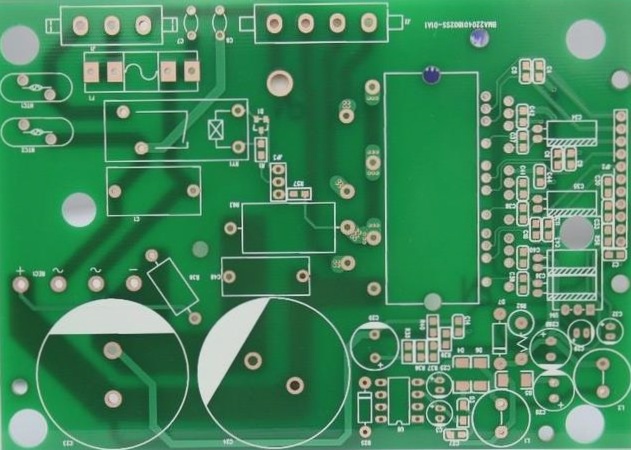2 Welding process requirements:
1) Clean PCB circuit board: Wipe off oil, dust, and oxide layer on the board, then use a brush to clean the wiped surface or blow it away with an air gun.
2) Glue dripping: Apply an appropriate amount of glue to the four corners of the board, with four glue points. Glue can only be applied to the four corners of the board, and excessive glue or glue on other parts of the board can affect its normal operation.
3) Chip mounting (solid crystal): When using a vacuum suction pen, the suction nozzle must be flat to avoid scratching the surface of the chip. Check the orientation of the chip and ensure that it is “flat, stable, and straight” when attached to the PCB circuit board: flat refers to the chip being parallel to the PCB, and there is no gap between the chips and the board; The stable chip and PCB circuit board will not fall off throughout the entire process; Stick the chip vertically to the reserved position on the PCB without deviation. The chip cannot be upside down or upside down.
4) Bonding: Through tensile testing, the qualified PCB bonding strength is: 1.0 wire ≥ 3.5G, 1.25 wire ≥ 4.5G. Standard aluminum wire solder joint requirements: wire tail ≥ 0.3 times wire diameter, ≤ 1.5 times wire diameter. The shape of the solder joint is elliptical. Solder joint length ≥ 1.5 times wire diameter, ≤ 5.0 times wire diameter. Solder joint width ≥ 1.2 times wire diameter, ≤ 3.0 times wire diameter. The bonding process requires careful operation, and the solder joints must be accurate. The operator should observe the welding process under a microscope to check for defects such as broken keys, entanglement, deviation, cold welding and hot welding, and aluminum sheet lifting. Once any problems are found, the responsible technician should be notified immediately for resolution.
5) Sealing: Before installing the chip plastic ring, check the regularity of the plastic ring to ensure that there is no obvious deformation in the center. Ensure that the bottom of the plastic ring is tightly attached to the surface of the chip during installation, and that the photosensitive area at the center of the chip is not obstructed. When dripping, ensure that the black glue completely covers the aluminum wires of the PCB sun ring and bonding chip, and the wires should not be visible. Black glue should not overflow the PCB sun ring, and any overflow should be wiped off in a timely manner. Black glue cannot penetrate the wafer through the plastic ring. During the dispensing process, the needle or cotton swab should not touch the surface of the chip or solder wire inside the plastic ring. Strictly control the drying temperature: preheat at 120 ± 5 ℃ for 1.5-3.0 minutes; Dry at 140 ± 5 ℃ for 40-60 minutes. After drying, there should be no pores or uncured phenomenon on the surface of ethylene, and the height of ethylene should not be higher than the plastic ring.
6) Testing: Using a combination of multiple testing methods: A. Visual and manual inspection; B. Quality inspection of automatic welding line for bonding machine; C. Automatic Optical Image Analysis (AOI) and X-ray analysis are used to check the quality of internal solder joints]>


